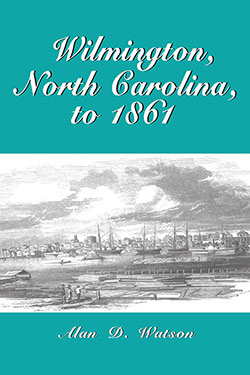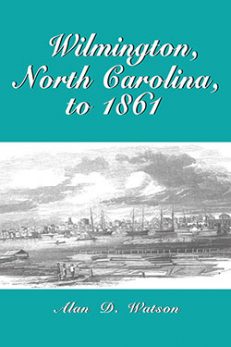Wilmington, North Carolina, to 1861
$29.95
In stock
About the Book
Of America’s thirteen original colonies, North Carolina was one of the most rural, its urban population miniscule and its maritime commerce severely limited—except in the town of Wilmington. Prior to the Civil War, the coastal town was North Carolina’s largest urban area and principal seaport, with shipping as the mainstay of the local economy. Wilmington indeed was a singular place in colonial and antebellum North Carolina. This book presents the history of Wilmington from its founding and development to the eve of the Civil War. Part I traces Wilmington’s history from the incorporation of the town in 1739–40 to 1789, when North Carolina joined the newly formed United States of America. This section focuses on the confused and disputed origins of Wilmington, life in a colonial urban setting, the growing importance of the port, and town governance. Part II expands upon the preceding topics for the years 1789 to 1861. It also examines the economic development of the port, the wide variety of social activities, the growth of the African American population, and Wilmington’s role in state and national politics.
About the Author(s)
Bibliographic Details
Alan D. Watson
Format: softcover (6 x 9)
Pages: 323
Bibliographic Info: photos, notes, bibliography, index
Copyright Date: 2003
pISBN: 978-0-7864-1427-7
eISBN: 978-0-7864-8214-6
Imprint: McFarland
Table of Contents
Acknowledgments v
Preface 1
THE FORMATIVE YEARS, TO 1789
1 The Emergence of a Town 5
2 Early American Life 28
3 A Developing Economy 51
4 Colonial Politics 71
THE MATURING YEARS, 1789–1861
5 The Growth of a Town 101
6 The African American Experience 125
7 Fellowship, Fraternity, Association 142
8 Education, Enlightenment, and Culture 162
9 Urban Government 185
10 An Expanding Economy 199
11 Antebellum Politics 227
Epilogue 245
Notes 249
Bibliography 283
Index 293
Book Reviews & Awards
“marvelously researched book…Watson’s research is exhaustive, informative, and extremely thorough…he is well versed in the history of this region. His use of comtemporary newspapers, quotations, and myriad graphs and tables…provides readers with a clear analysis of Wilmington’s development…enjoyable read…to truly know and understand the history of Wilmington, this book is essential”—The North Carolina Historical Review.





